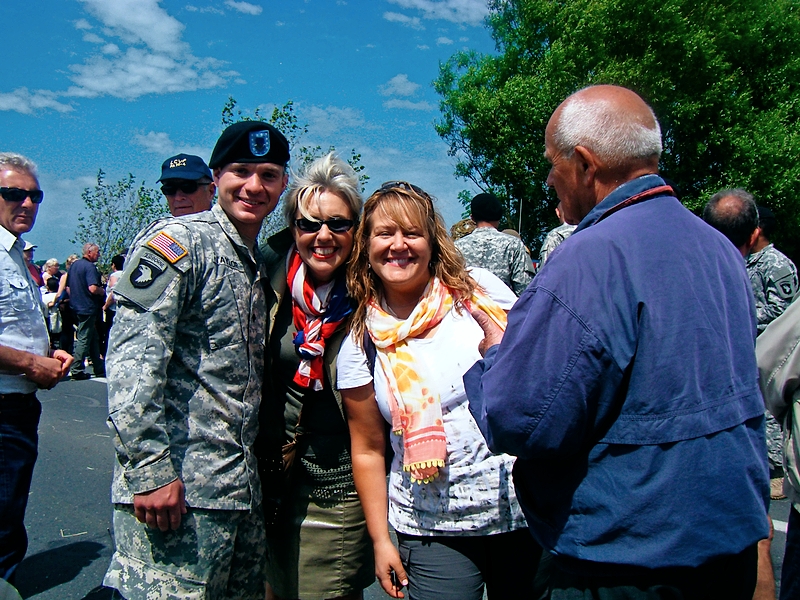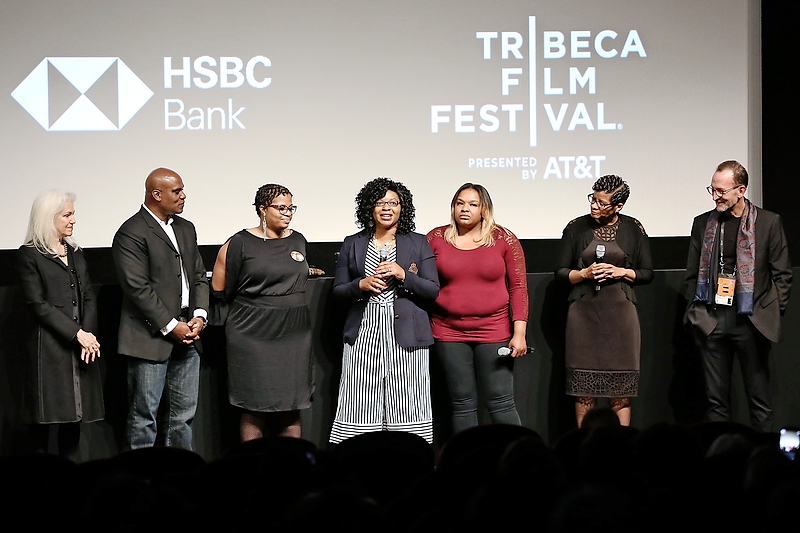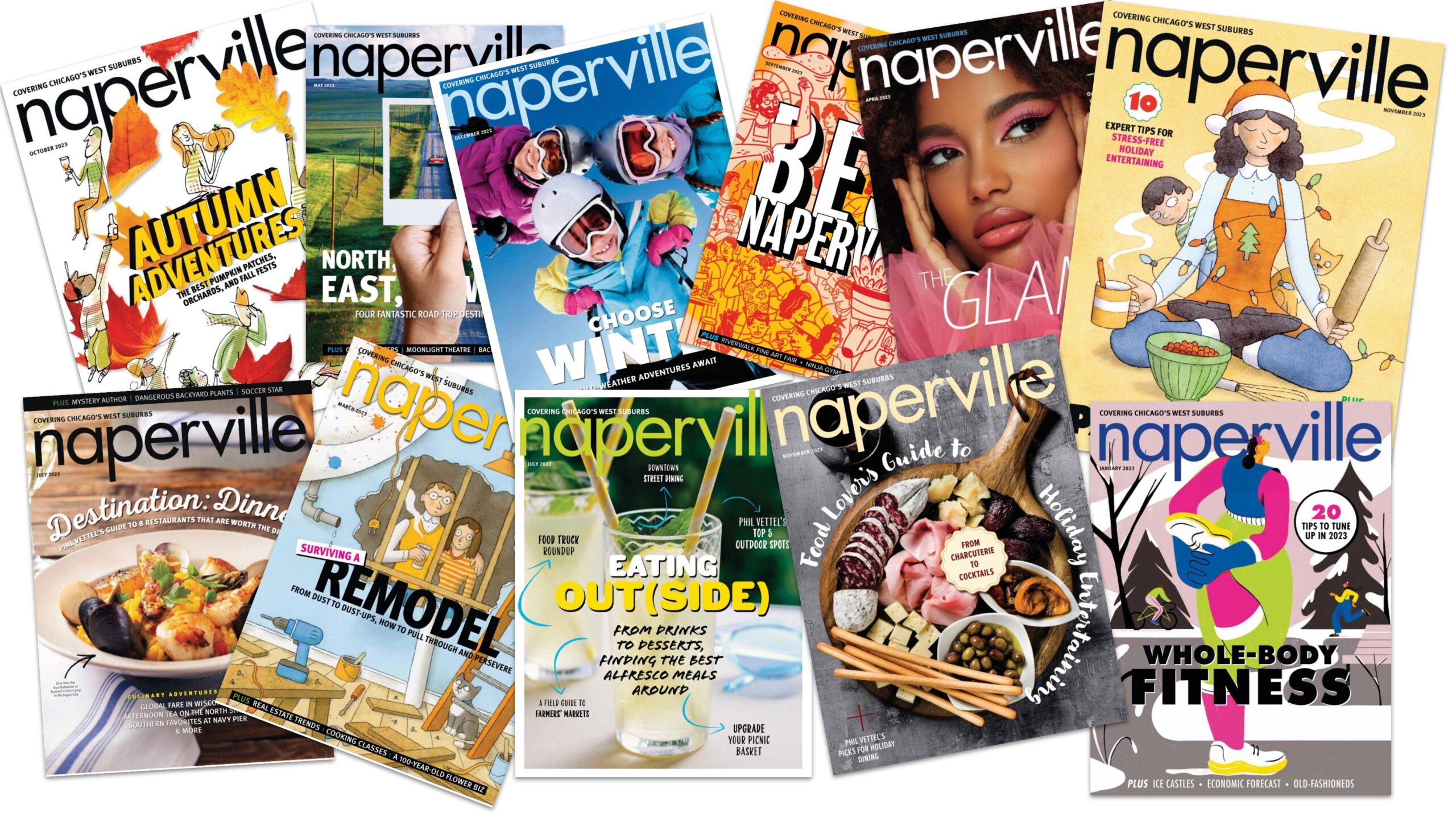Provocative Stories
By Kelli Anderson
July 2018 View more 630

Whether offering ground-breaking perspective from WWII survivors, or shedding new light on a young woman’s tragic death that made national headlines, west suburban influencers played significant roles in the creation of two exceptional documentaries this year.
“The Girl Who Wore Freedom”
When Hunter Taylor, serving in the 101st Airborne in 2015, invited his mother to join him and his army unit in the D-Day celebrations in Normandy, France, he had no idea how much it would impact her life. Christian Taylor, a longtime Wheaton resident, actress and producer, has since spent the past three years—and her own income—making a documentary related to that life-changing experience.
Taylor’s “The Girl Who Wore Freedom” is an unlikely love story told for the first time by those who, for 73 years, were never invited to tell it: the occupied French, and the American soldiers who liberated them. It is a story about their suffering during four years of brutal German occupation, their liberation and their love and gratitude from the soldiers they have never forgotten.
The film has caught the imagination and dedication of volunteers from around the country and across the pond, who are donating their time and professional talents in an effort to bring the film’s meaningful message to the big screen.
It is also a story that only a woman can tell.
“This is a WWII story told for the first time—as far as anyone knows—from the point of view of a female. And half of the cast and crew are women and minorities,” Taylor explains. “The lens I saw this through is that it is a love story about the Normandy invasion, the early days of WWII and occupation, French survivor stories—what they went through—and why the liberation was so critical.”
But “The Girl Who Wore Freedom” is not just a film commemorating the past with a unique perspective—it is also a story about the present, about an annual event that begins each summer with an unsung migration funded by the French people to bring back WWII soldiers in an effort to express the gratitude of generations.
Now in their 90s, veterans step back in time for a few memorable days to the sights and sounds of the 1940s. In parades, reenactments, ceremonies, dances and parties, these men are celebrated, responding to the crowd’s cheers with their broad smiles, and wearing with pride singular badges of honor: bright red lipstick kisses.
“It is my hope,” Taylor says, “that when we begin to hear their stories—to see how an occupied people live out their gratitude for generations and see their way of looking at freedom—maybe we can learn from that.”
For more information or to support the ongoing film project, visit The Girl Who Wore Freedom’s Facebook page or normandystories.com.

“Say Her Name: The Life and Death of Sandra Bland”
Making its debut at the famed Tribeca Film Festival in Manhattan this past April, the documentary “Say Her Name: The Life and Death of Sandra Bland” about the former Naperville resident, opened to positive reviews.
The film explores the controversy surrounding the contested suicide of the 28-year-old African American activist on July 15, 2015, in a Waller County, Texas jail cell after a traffic violation and subsequent arrest. To their credit, filmmakers Kate Davis and David Heilbroner shied away from pat answers and over-simplified editorialism. Instead, the documentary gives voice to every side in the case—from embattled law enforcement and medical examiners to relatives.
In the film, Waller County authorities recount their story of the three days in which Bland was kept in isolation, their difficulty handling media and public outrage and—at one point—dealing with the storming of a local jail by angry protesters fueled by racial tension. Family members, too, express their dismay over questionable protocols, poor records and the baffling lack of video evidence and cell monitoring. Rejecting the police report of suicide by hanging, the family paints a portrait of a confident young college graduate with no history of depression or self-harming behavior.
Medical reports. Testimony. Character witnesses. Racial tension. Media bias. The film raises more questions than it answers, and illustrates how complex and confusing reality can often be.
Especially powerful is the posthumous presence of Bland’s own voice in the film, excerpted from the video blog series she made in her early 20s called “Sandra Speaks.” It not only allows Bland to represent herself—revealing her humorous and charismatic personality—but it gives voice to her passions about racial conflict and resolution. “We need to educate each other,” she concludes. “That’s the only way this is going to work.”
“Say Her Name: The Life and Death of Sandra Bland” is scheduled to air on HBO later this year.


